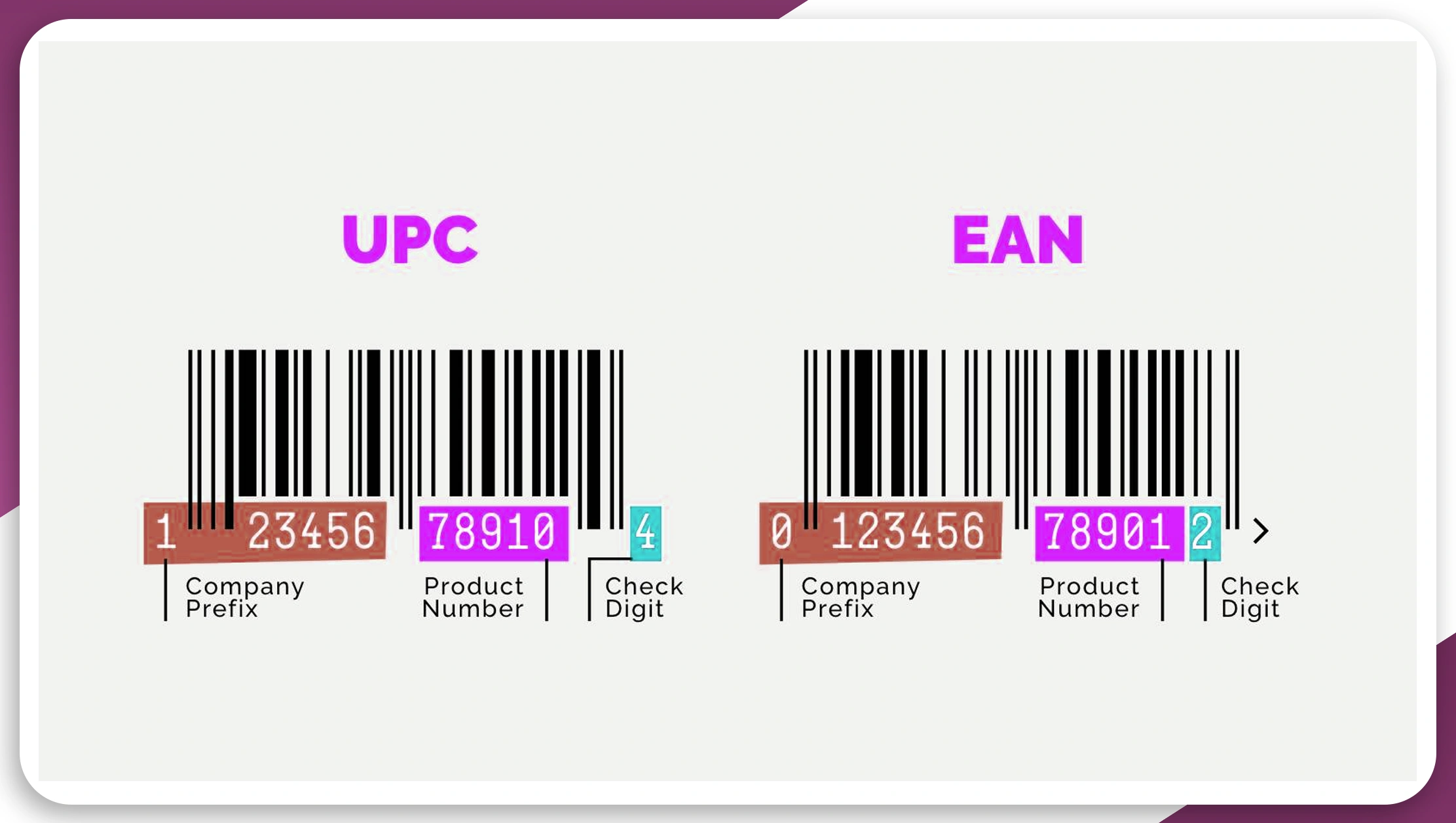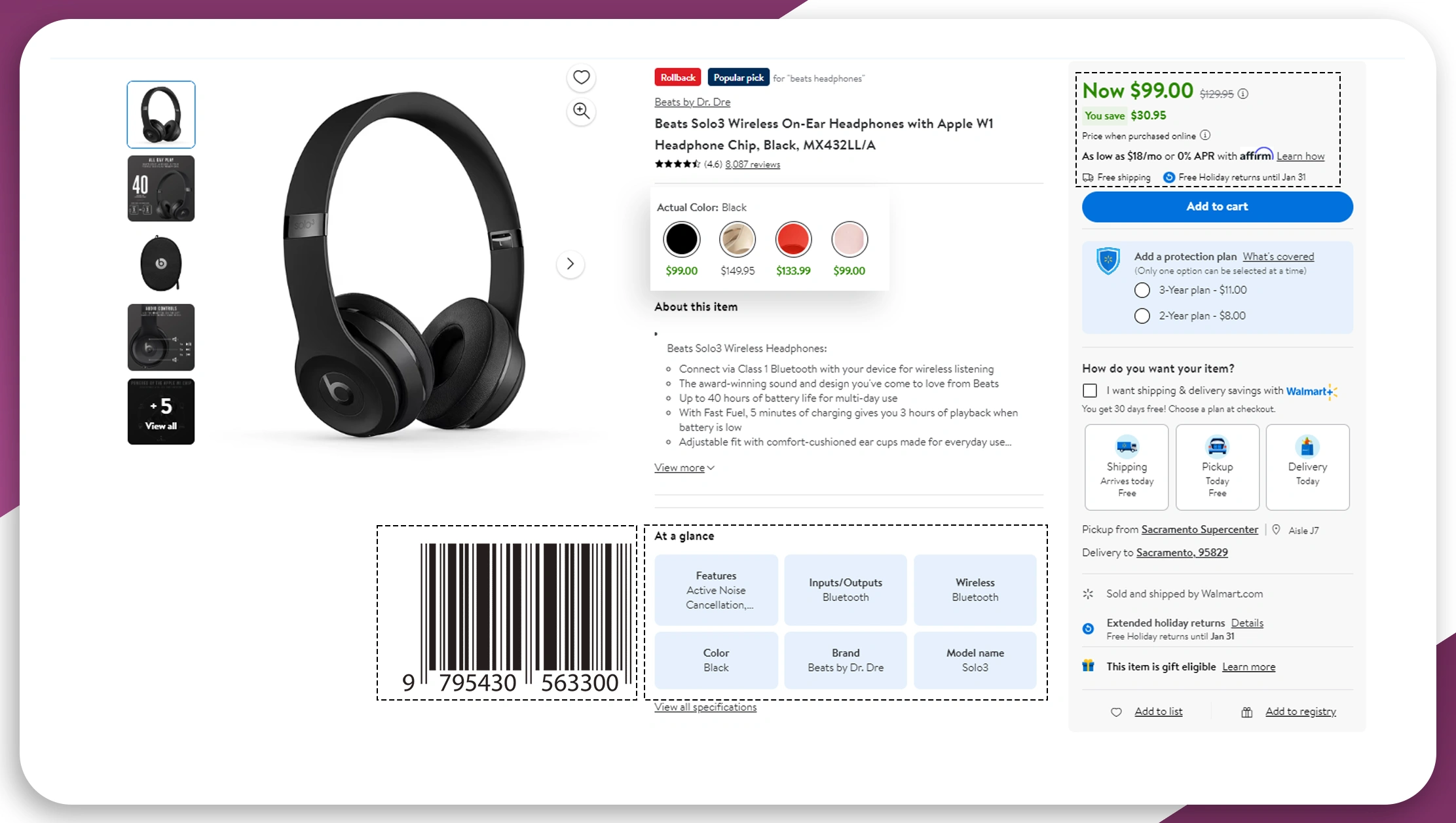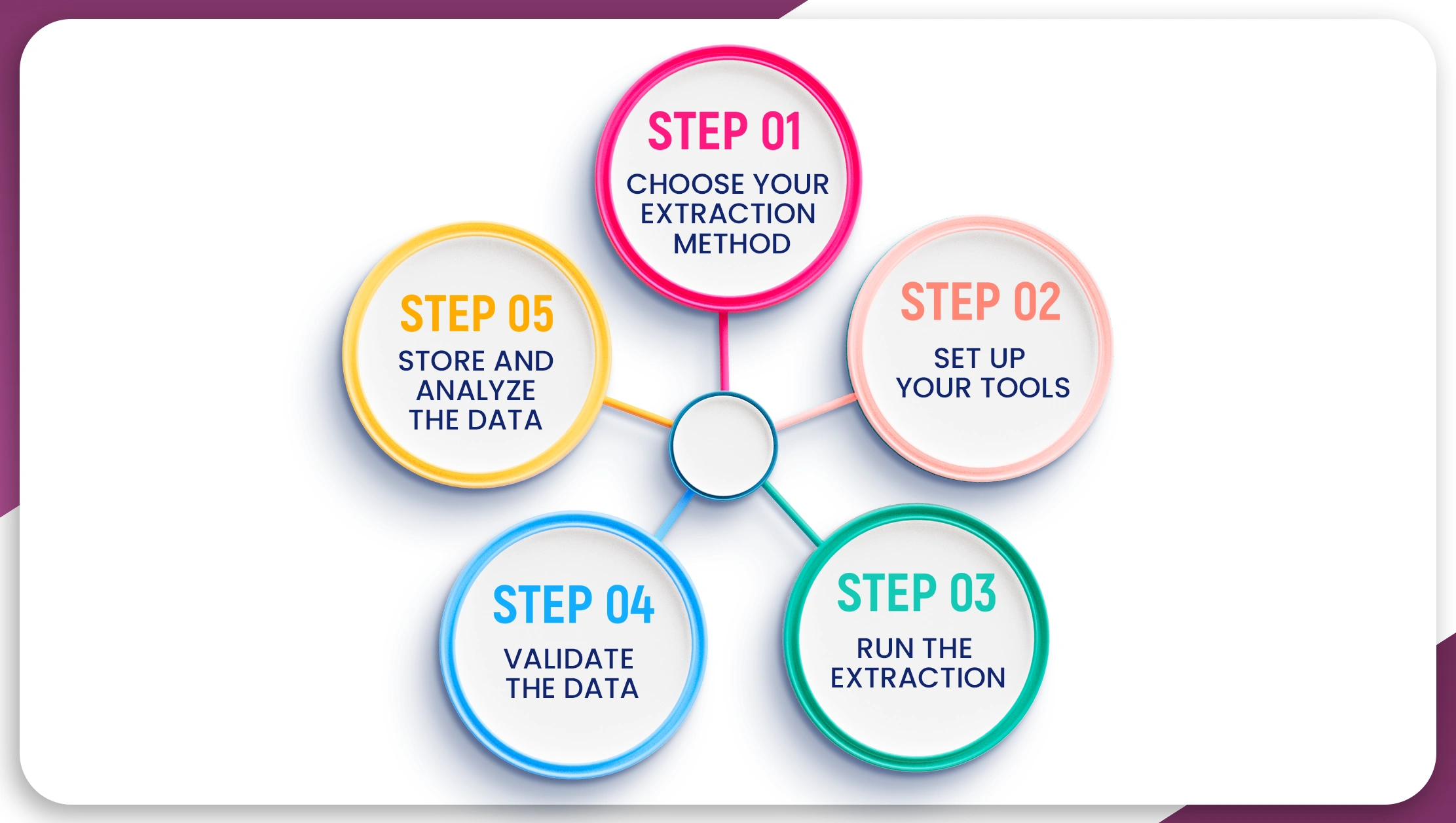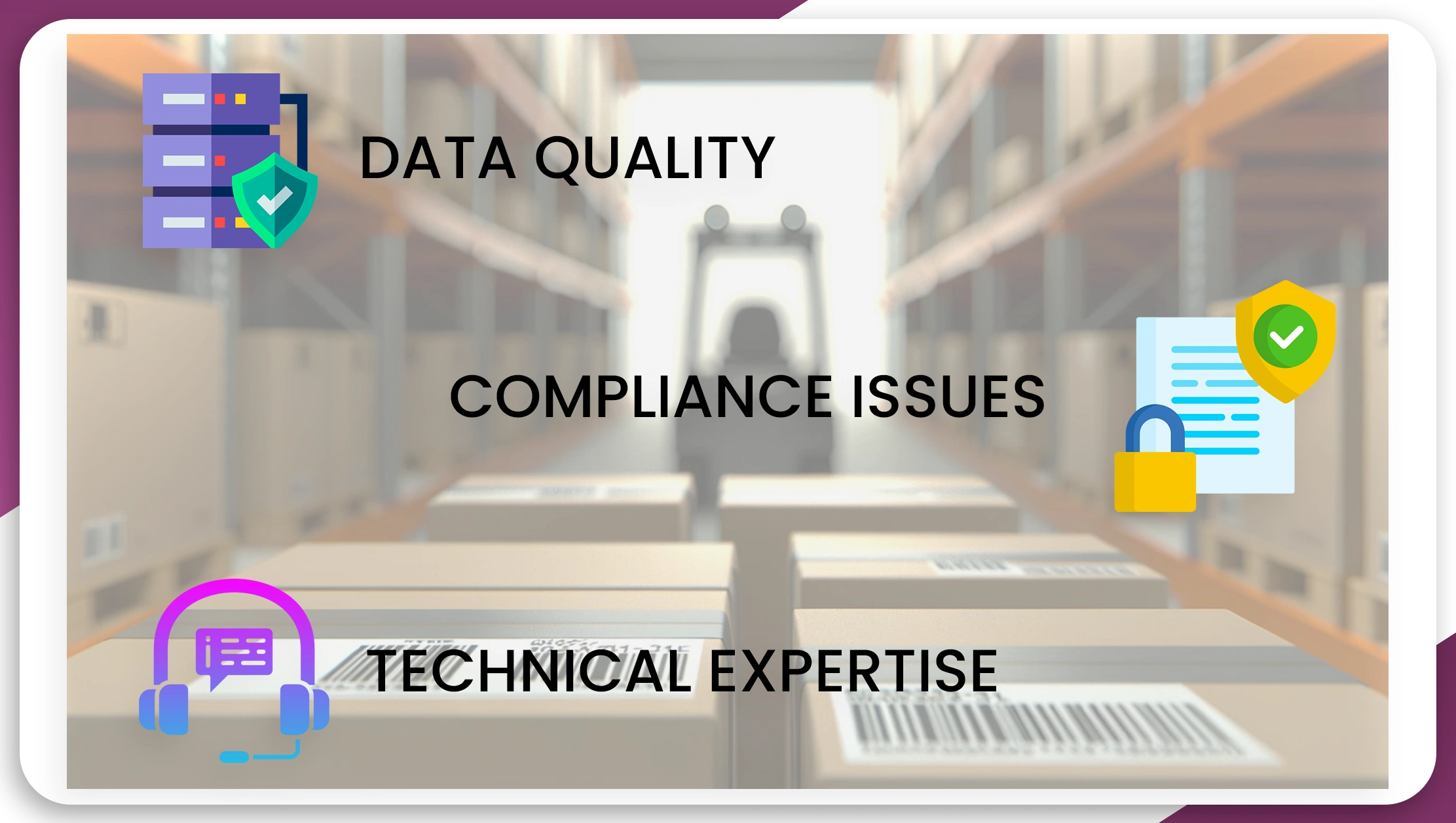.webp)

Introduction
In today’s fast-paced retail environment, efficient inventory management and data accuracy are paramount. One essential component that plays a crucial role in this process is using barcodes, particularly the EAN-13 and UPCs. These codes facilitate tracking and management of products and streamline operations across various business functions. Businesses looking to extract product barcodes EAN- 13 and UPC can significantly enhance operational efficiency. This blog will explore how you can effectively extract UPCs, discussing the significance of these codes, various methods for scraping barcodes (EAN-13 and UPC), and tools available in the market for UPC data extraction.
Understanding EAN-13 and UPC Codes

What Are EAN-13 Codes?
EAN-13 (European Article Number) is a 13-digit barcode widely used for retail products globally. The EAN-13 barcode system encodes information about the product, such as the manufacturer and the product type, allowing for easy identification at points of sale. The first three digits represent the country code, followed by the manufacturer's and product codes.
What Are UPC Codes?
UPC (Universal Product Code) is another barcode format primarily used in the United States and Canada. It is typically a 12-digit code that serves a similar purpose to the EAN-13. The UPC code also includes information about the manufacturer and the product, enabling quick scanning and data retrieval at checkout.
Importance of Extracting Barcodes

Extracting EAN-13 and UPC codes can significantly enhance your business's efficiency. Here are some key benefits:
Improved Inventory Management: By scraping barcode data, businesses can keep track of their stock levels in real time, minimizing overstock and stockouts.
Accurate Product Listings: Barcode information extraction ensures accurate product details, enhancing customer satisfaction. This is particularly crucial when you scrape product data with EAN-13 and UPC codes, as it helps maintain consistency across various sales channels.
Data Analytics: Analyzing barcode data allows businesses to gain insights into sales trends, helping to optimize pricing and marketing strategies. When extract UPC codes from product listings, retailers can identify best-sellers and adjust their inventory accordingly.
Efficiency in Operations: Automating the process to scrape EAN-13 and UPC codes reduces manual errors and saves time, allowing employees to focus on more strategic tasks.
Methods for Extracting EAN-13 and UPC Codes

1. Manual Extraction
One of the simplest ways to extract product barcodes is through manual entry. This method, however, is time-consuming and prone to errors. It involves manually scanning the barcode using a barcode scanner and entering the information into a spreadsheet or database. While it may work for small inventories, it becomes increasingly impractical as the number of products grows.
2. Using Barcode Scanners
Barcode scanners are handheld devices designed to read EAN-13 and UPC codes quickly and accurately. They can scan barcodes and automatically extract barcode data EAN-13 and UPC. While this method improves speed and accuracy over manual entry, it can still be cumbersome for large inventories, especially if products need to be scanned individually.
3. Optical Character Recognition (OCR)
OCR technology can be employed to extract barcodes from images. Businesses can take pictures of products and use OCR software to read the barcodes. This method is beneficial when dealing with extensive inventories, as it can automate the extraction process. By extracting product EAN-13 and UPC for inventory management, businesses can streamline operations and reduce the need for manual input.
4. Web Scraping
Web scraping is a powerful technique for extracting data, including barcodes, from online stores. With web scraping, businesses can scrape product data, including EAN-13 and UPC codes, from e-commerce websites. This approach allows for UPC and EAN-13 data scraping on a larger scale, automating gathering information for inventory management.
Barcode Scraping Solutions: Various tools and platforms specialize in web scraping, making it easier for businesses to efficiently extract EAN-13 and UPC from products. These solutions can pull large volumes of data in real time, providing up-to-date information on products available in the market.
Identify Target Websites: Choose the online stores where your products are listed and where you want to extract data.
Use a Scraping Tool or API: Various scraping tools and APIs are available for product data extraction with barcodes. These tools can automate extraction, pulling data directly from product listings.
5. Using APIs for Product Data Scraping
Many e-commerce platforms offer APIs that allow businesses to access product data directly, including EAN-13 and UPC codes. This method is highly efficient as it enables real-time data extraction without scraping.
Benefits of Using APIs

Real-Time Data: APIs provide up-to-date information, ensuring accuracy.
Efficiency: Extracting barcode data through APIs can significantly reduce the time spent on data collection.
Ease of Use: APIs often come with documentation and support, making them user-friendly for developers.
Steps to Extract EAN-13 and UPC Codes

Step 1: Choose Your Extraction Method
Choose an appropriate method for extracting product barcodes EAN-13 and UPC based on your business needs. If you have a large inventory, web scraping or using APIs may be more suitable than manual entry.
Step 2: Set Up Your Tools
For web scraping, set up your scraping tools or API integration. Configure a scraper to target the specific product pages from which you wish to extract data.
Step 3: Run the Extraction
Execute the extraction process, whether it be through manual entry, a barcode scanner, or web scraping. Ensure that the tool is correctly configured to capture all relevant data.
Step 4: Validate the Data
After extraction, it’s essential to validate the data to ensure accuracy. Check for discrepancies in the extracted EAN-13 and UPC codes, product descriptions, and other details.
Step 5: Store and Analyze the Data
Store the extracted barcode data in a structured format, such as a database or a spreadsheet. Use this data for inventory management, sales analysis, and reporting.
Use Cases and Case Studies
Challenges in Extracting EAN-13 and UPC Codes

While extracting barcode data can offer significant advantages, several challenges may arise:
Data Quality: Ensuring the accuracy and completeness of extracted data can be difficult, especially when scraping multiple sources.
Compliance Issues: Scraping product details from websites must comply with the site's terms of service. Failure to do so can lead to legal consequences.
Technical Expertise: Web scraping and API integration may require technical knowledge, which can be a barrier for some businesses.
Conclusion
Extracting product barcodes EAN-13 and UPC is essential for any business to enhance its inventory management and data accuracy. Whether you choose manual methods, barcode scanners, OCR technology, or web scraping, having access to accurate barcode information will streamline your operations and improve overall efficiency.
At Real Data API, we provide robust solutions for scraping product details and barcodes from online stores. Our services include APIs for product data scraping that enable you to extract barcode information efficiently for your inventory needs. Contact us today to learn how we can help you optimize your data extraction process and enhance your business operations!













